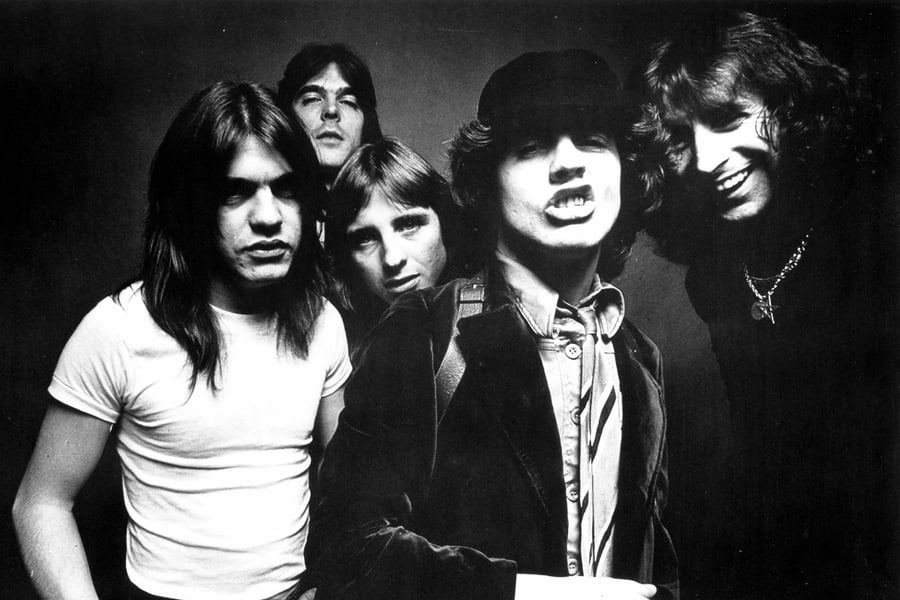AC/DC: 25 Essential Songs
The Aussie legends’ rude and raucous best, from “Big Balls” to “Back in Black”

Michael Ochs Archives/Getty Images
Bulldozing rock-hard riffs, more double entendres than you can shake a stick at, and one comically snug schoolboy uniform: These are just a few of the ingredients that have made AC/DC one of the most iconic rock & roll bands of the past 45 years. Songs like “Highway to Hell” and “You Shook Me All Night Long” are classic-rock radio staples, and their 1980 LP, Back in Black, would be the bestselling album of all time if Thriller didn’t exist.
The secret to their success has always been their authenticity. When they exploded out of Sydney in the mid-Seventies, AC/DC’s scrappy original frontman Bon Scott sang about the group’s personal holy trinity — sex, drinking, and rock & roll — and ever since gravelly voiced Brian Johnson took the reins after Scott’s death, they’ve kept right on worshipping at the same altar. “We’ve been accused of making the same album over and over 12 times,” guitarist Angus Young once said. “The truth is, we’ve made the same album over and over 15 times.”
The best AC/DC songs overdose on crude, raucous riffs and offensive turns of phrase, whether its Scott bragging about his “Big Balls” or Young speeding down the “Highway to Hell” spewing out bluesy, high-voltage solos. As a band, they’re unrelenting and freewheeling; nobody has ever had to wonder if AC/DC were having a good time. So in recognition of Back in Black‘s 40th anniversary, we look back at 25 of their greatest songs. For those about to rock, we salute you.
From Rolling Stone US



























































